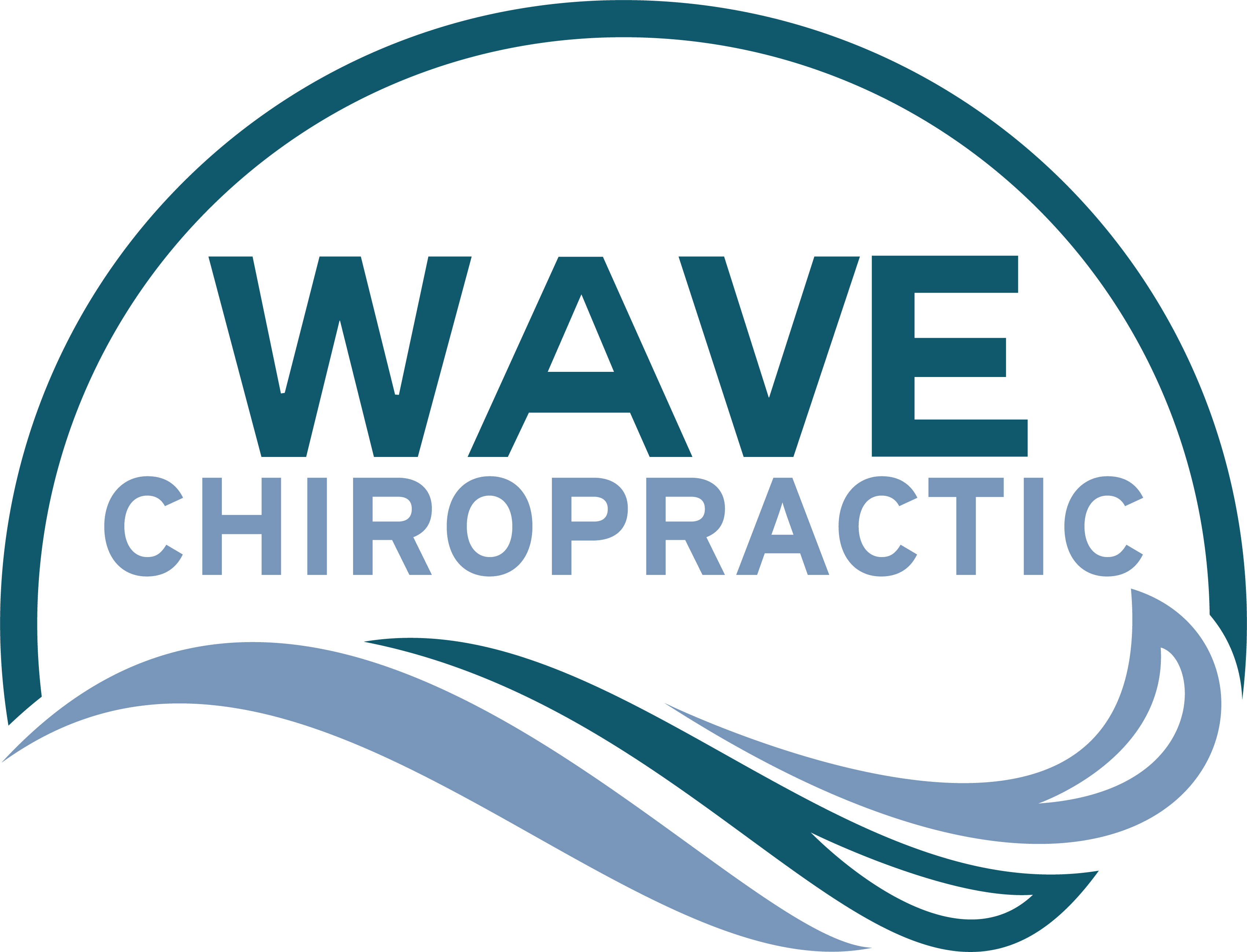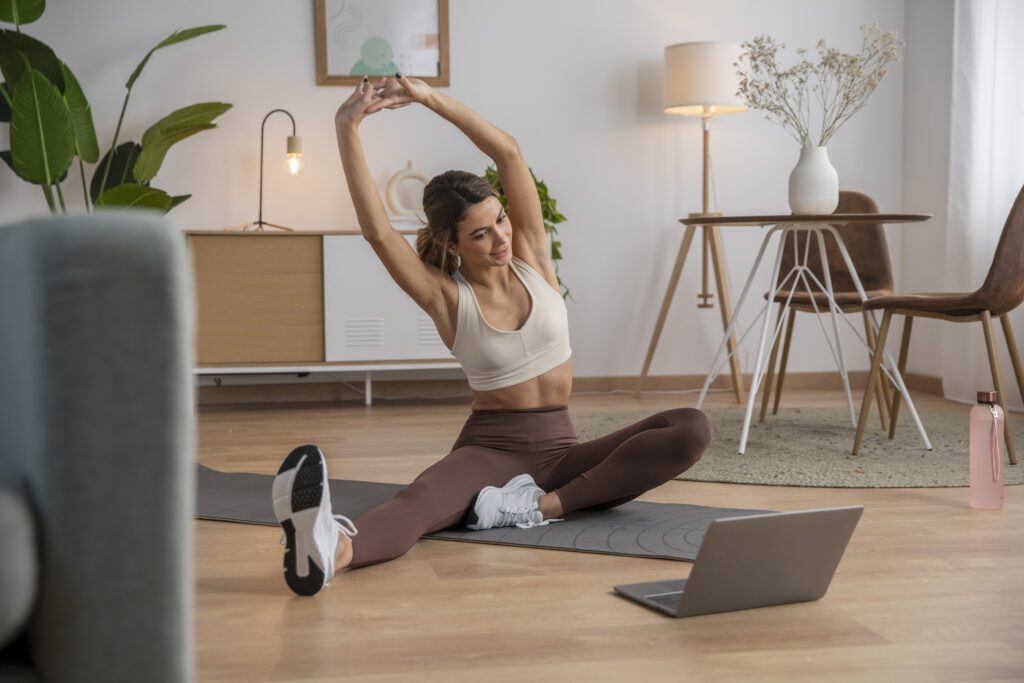If you're looking to improve your joint flexibility and movement, it's important to start with a solid approach. You might find that incorporating a well-structured warm-up routine can set the tone for your performance. Staying hydrated is another vital aspect that often gets overlooked. But that's just the beginning; there are several strategies you can implement to see significant improvements over time. Curious about the specific tips that can make a real difference?
Warm Up Properly
Before diving into any physical activity, it's crucial to warm up properly to prepare your joints and muscles for movement. A good warm-up increases blood flow, raises your body temperature, and enhances your overall performance.
Start with some light aerobic exercises, like brisk walking or jogging in place, for about 5 to 10 minutes. This gets your heart pumping and helps your body shift from rest to activity.
Next, focus on dynamic movements that mimic the exercises you'll be doing. For example, if you're planning to run, incorporate leg swings or high knees to activate your hips and legs. If you're heading into weightlifting, consider arm circles or torso twists to loosen up your upper body. These movements engage your muscles and joints without putting them under too much strain.
Pay special attention to any areas that feel tight or stiff. Take the time to move through your full range of motion in a controlled manner. This not only helps to prevent injuries but also enhances your flexibility over time.
Remember, the goal is to prepare your body, not to exhaust it.
Finally, listen to your body. If something feels off, don't push through it. Adjust your warm-up accordingly, and always prioritize quality over quantity. A proper warm-up sets the stage for a successful workout, allowing you to perform at your best and enjoy the benefits of your physical activity.
Incorporate Stretching Routines
Incorporating stretching routines into your fitness regimen is essential for improving joint flexibility and overall mobility.
Whether you're a seasoned athlete or just starting out, dedicating time to stretch can yield significant benefits. Stretching not only enhances flexibility but also reduces the risk of injury and improves circulation.
To effectively incorporate stretching into your routine, consider these three key strategies:
1. Schedule Regular Stretching Sessions: Set aside specific times during your week to focus solely on stretching. Aim for at least 10-15 minutes after your workouts or on rest days to allow your muscles to recover and lengthen.
2. Utilize Dynamic and Static Stretching: Dynamic stretches, like leg swings or arm circles, are great for warming up your body before exercise. On the other hand, static stretches, such as holding a hamstring stretch, are effective for increasing flexibility post-workout.
Mix both types in your routine to maximize benefits.
3. Target Major Muscle Groups: Focus on stretching key areas that often hold tension, such as your hips, hamstrings, quadriceps, and shoulders.
Pay attention to your body's signals and stretch until you feel a gentle pull, never forcing anything.
Stay Hydrated
Staying hydrated is vital for maintaining joint flexibility and overall health. When your body lacks adequate water, joint lubrication decreases, which can lead to stiffness and discomfort. Water acts as a lubricant in your joints, helping to maintain their structure and function. By drinking enough fluids, you're supporting your body's ability to perform everyday movements with ease.
You mightn't realize how much your hydration impacts your joints until you experience discomfort. Dehydration can lead to a decrease in synovial fluid, which is essential for cushioning your joints during physical activity. To keep your joints functioning effectively, aim to drink water consistently throughout the day. Don't wait until you're thirsty; make it a habit to sip water regularly.
Consider your activity level and environmental factors, too. If you're exercising or living in a hot climate, you'll need to increase your fluid intake. Electrolyte-rich drinks can also be beneficial after intense workouts, helping to replenish lost minerals and support muscle function.
Make it a point to carry a water bottle with you, so you're always reminded to hydrate. Setting reminders on your phone can also help you stay on track.
Remember that hydration isn't just about drinking water; foods like fruits and vegetables also contribute to your daily intake. By prioritizing hydration, you'll not only enhance your joint flexibility but also improve your overall health and well-being.
Practice Regular Strength Training
To enhance your joint flexibility, you should practice regular strength training. This form of exercise not only builds muscle but also supports your joints, helping them move more freely.
When you strengthen the muscles around your joints, you provide better stability and control, which can lead to improved flexibility.
Here are three effective ways to incorporate strength training into your routine:
1. Bodyweight Exercises: Start with bodyweight exercises like squats, lunges, and push-ups. These movements engage multiple muscle groups, improving strength and flexibility simultaneously.
Aim for two to three sessions a week, focusing on proper form to prevent injury.
2. Resistance Bands: Incorporate resistance bands into your workouts. They're versatile and can add varying levels of resistance.
Exercises like seated rows or lateral band walks can enhance strength in the hip and shoulder joints, promoting better mobility.
3. Weight Training: Use free weights or machines at the gym to further challenge your muscles.
Focus on compound movements, like deadlifts and bench presses, that engage multiple joints. Start with lighter weights and gradually increase as you build strength, ensuring your joints remain protected.
Use Foam Rollers
Using foam rollers can greatly improve your joint flexibility by releasing tension in your muscles and fascia. These simple yet effective tools help break down knots and tight areas in your body, making it easier for you to move freely. When you roll out tight muscles, you increase blood flow and promote recovery, which can enhance your overall flexibility.
To get started, choose a foam roller that suits your needs. There are various densities and sizes available, so pick one that feels comfortable but effective for your body.
Begin with the larger muscle groups, like your thighs and back, before moving onto smaller areas. Place the foam roller on the ground and position the area you want to target on top of it. Slowly roll back and forth, applying pressure as needed. You should aim for about 30 seconds to a minute on each area, focusing on spots that feel particularly tight.
Remember to breathe deeply during this process; it can help you relax and get the most out of your rolling session. If you find a tight spot, hold the pressure on that area for a few seconds until you feel it release.
Consistency is key, so try to incorporate foam rolling into your routine a few times a week. You'll notice that as you release tension in your muscles, your joints will feel more mobile and flexible, making everyday activities easier and more enjoyable.
Focus on Joint-Friendly Exercises
Prioritizing joint health is essential for maintaining overall flexibility and mobility. Engaging in joint-friendly exercises can make a significant difference in how your joints feel and function.
These exercises not only help strengthen the muscles around your joints but also improve your range of motion and decrease the risk of injury. Here are three types of joint-friendly exercises you should consider incorporating into your routine:
- Low-Impact Aerobics: Activities like swimming, cycling, or using an elliptical machine provide cardiovascular benefits without putting excessive strain on your joints. These exercises keep your heart healthy while being gentle on your body.
- Strength Training with Resistance Bands: Using resistance bands can help you build strength without the heavy weights that might stress your joints. Focus on controlled movements to engage the muscles around your joints effectively.
- Flexibility and Stretching Exercises: Incorporate yoga or Pilates into your routine. These practices enhance flexibility, improve balance, and promote proper alignment. They also teach you how to move your body in a way that protects your joints.
Prioritize Rest and Recovery
Rest and recovery play an essential role in maintaining joint flexibility and overall health. When you engage in physical activity, especially exercises that challenge your joints, you create micro-tears in your muscles and connective tissues. To heal these tissues and enhance flexibility, your body needs time to rest. Ignoring this significant aspect can lead to stiffness and increased risk of injury.
Incorporating rest days into your routine isn't just beneficial; it's necessary. Schedule regular rest days to allow your body to recover. During these days, focus on gentle activities like stretching or yoga, which can promote blood flow without putting additional strain on your joints.
Listen to your body. If you feel pain or persistent soreness, take a break and give yourself time to heal. Pushing through discomfort often leads to setbacks and can hinder your flexibility goals. Instead, be proactive about your recovery. Hydrate well, eat a balanced diet rich in anti-inflammatory foods, and consider incorporating practices like foam rolling or massage to alleviate tension.
Sleep also plays an essential role in recovery. Aim for 7-9 hours of quality sleep each night, as this is when your body does most of its healing.
Prioritizing rest and recovery not only enhances your joint flexibility but also improves your overall physical performance. By respecting your body's needs, you'll find yourself moving more freely and efficiently in the long run.
Conclusion
By following these tips, you can greatly enhance your joint flexibility and movement. Remember to warm up properly, incorporate stretching routines, and stay hydrated. Regular strength training and using foam rollers will help keep your joints healthy, while focusing on joint-friendly exercises guarantees you avoid injury. Don't forget to prioritize rest and recovery; it's just as essential for your overall performance. With commitment and consistency, you'll enjoy improved flexibility and a more active lifestyle.

